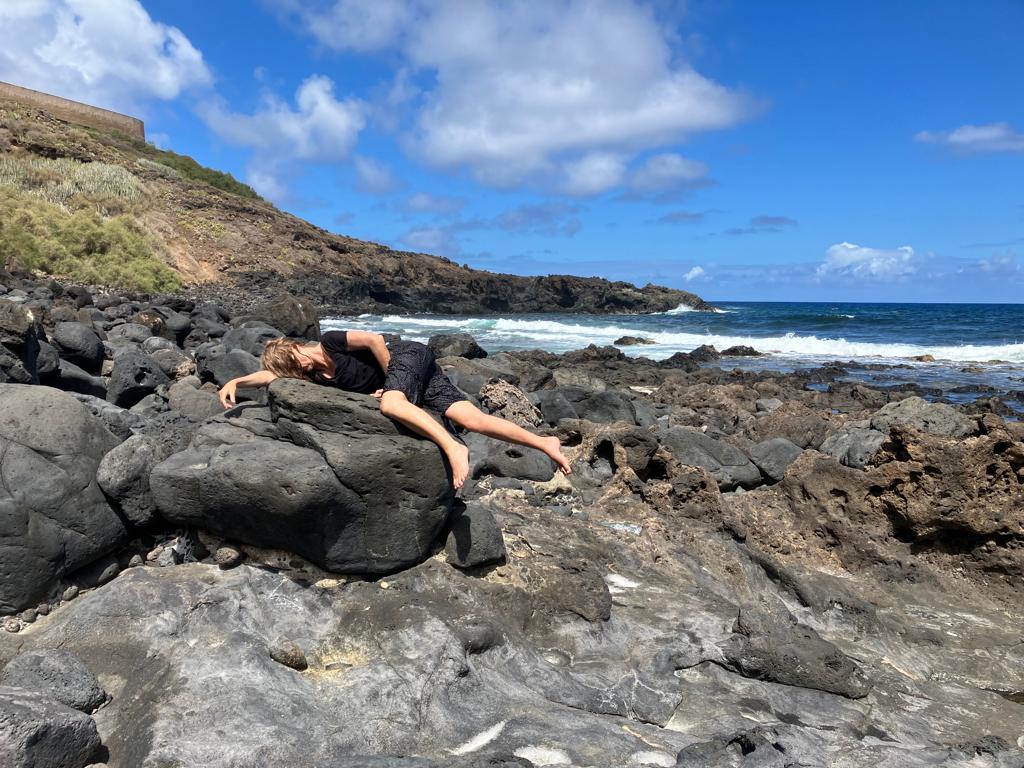Tara:
The themes of Unseen are invisibility: invisible forces, microscopic plankton, hidden disabilities and the invisibility of being a middle aged lesbian couple.
All of these were touched on by our experience of being in Tenerife.
Working in that dry fiery landscape of lava stone and fierce Atlantic seas has definitely shaped some of the undercurrent of this piece. I could feel the landscape in my body as I moved. The forces of heat and rock and sea currents.
We collected water from the sea and saw plankton under our microscope that were more active than any we’d seen anywhere else.
Feeling my dyspraxia – trying to learn the movement from videos of improvs I’d done on the lava at La Barranquera on the Tenerife coast, trying to refind that inner quality, feeling my limitations, how easily I improvise and how slowly I pick up dance steps.
And when we did our sharing at La Granja there were many middle-aged queer people in the audience who asked provocative questions about the visibility of lesbian and queer dance and choreographers in Ireland. Who else is making queer dance work in Ireland? Is that work supported? Do we feel visible as queer female choreographers?
A creatively rich focused time with many unexpected gifts – such as one of the practical perfect things that came out of working on the stage at La Granja, and particularly doing the work in progress sharing at the end, was that I got to see that it would be possible to do this piece on a stage. The technicians at La Granja were incredible, and created the perfect deconstructed stage space that I would want for this show. Unseen is being made for art galleries and white spaces but I got to see how well it works in a theatre too, which could expand the range of places it can be performed when we tour it next year.
Stacey:
The visual art portion of Unseen took on a new direction as a response to the abstract nature of images found under the microscope in Tenerife.
Prior to our residency I concentrated on finding objects under the microscope and making watercolor interpretations of what I was observing. In retrospect that created a distance between me and nature.
Because what I was seeing in Tenerife was so different and abstract, I felt much more of an interconnection between nature and art form and this transformed and pivoted my art making to include this visceral change.
I chose cyanotype and mono prints to add to the visual language of Unseen.
Cyanotypes are the earliest known photographs that use objects laid onto photographic paper and exposed to UV light. This technique was a key step in the history of scientific illustration in the mid 1800’s.
Inspired by what I had seen in Tenerife I created abstract photographs to capture the essence of what I had seen under the microscope. I used vinegar, soda ash and tumeric to create a watery and abstract world I had observed and felt.
With mono prints I used impermanent objects to create different variations of plant themes that were so prevalent in what I saw . The very fact that each print was so very different , picked up different nuances from a single plate was the perfect way to introduce a visual language to our project which I feel really transformed the visual art aspect of Unseen.



